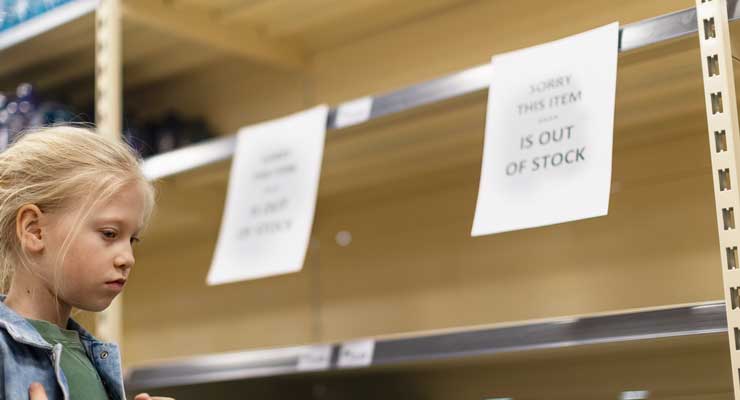- Stockouts are costing the retail establishment close to $1 trillion.
- A whopping 31 percent, decided to purchase at another store — that means not only are you losing sales, but your competitor gets them instead.
- Solving these problems is complex, but the closest thing to a cure-all is digitalization.
by Joey Rubinstein
If you are running a grocery, convenience store, liquor shop, or something similar, you should think twice about waiting until tomorrow to reorder your best selling products. When a customer encounters a shelf with a product that has run out, then they might not be a customer for much longer.
Thankfully, there are tools available for a store operator to attack this problem at its root.
What is a Stockout?
A stockout, or “out of stock,” is generally thought of as when a store runs out of inventory on a particular item, and presumably has an empty shelf. However, Retail Dive’s Daphne Howard provides a wider definition: ‘An “out-of-stock” situation includes empty shelves (encountered by 32% of shoppers), failure to find staff to help (16%), found staff, but not merchandise (17%), or the price in store didn’t match an ad (18%), among other reasons (17%). All told, worldwide, shoppers experience $984 billion worth of out-of-stocks, $144.9 billion in North America alone, according to IHL.’ In other words, stockouts are costing the retail establishment close to $1 trillion.
How Customers React to Stockouts
In 2004, the Harvard Business Review interviewed over 70,000 shoppers to find out how they react to a stockout. Nine percent of customers decided simply not to purchase at all, while 15 percent of consumers pushed off the purchase decision. However, the majority of shoppers, a whopping 31 percent, decided to purchase at another store — that means not only are you losing sales, but your competitor gets them instead.
Since 2004, stockouts have only become worse for retailers. Today, when facing a stockout, there is a very good chance that shoppers will just take out their phones and order the product online. In fact, according to Retail Dive, shoppers with Amazon Prime are 52 percent more likely to order online when facing an out of stock retail item. Even more startling, 24 percent of Amazon’s revenue is from shoppers who first tried to purchase products in stores.
How Do Stockouts Impact Sales
In 2021, Research firm Nielsen IQ used proprietary technology to track off shelf stock outs. They discovered that retailers lost out on seven percent of unrealized sales because of items not being on shelves. Considering that off shelf stockouts make up less than a third of Howard’s definition of stockouts, we can extrapolate (0.32X = 7.3%) that the true stockout effect is actually 23 percent of unrealized sales.
Tech Adoption Ends Stockouts
Thomas Gruen and Daniel Corsten wrote an academic essay in 2005 titled “On Shelf Availability: An Examination of the Extent, the Causes, and the Efforts to Address Retail Out-of-Stocks.” One shocking conclusion was that 72 percent of traditional (product not on shelf) out of stock events are the result of poor store management. In their words, the stockouts are caused in the store, by poor store processes, late and insufficient ordering, incorrect forecasts, or shelf restocking problems.
Solving these problems is complex, but the closest thing to a cure-all is digitalization. Essentially, digitalization means tracking store operations with some sort of software solution. For example, with some inventory management software, you will receive automatic updates about items that are low in stock. With certain products, you can also track locations and see where items sit between your storefront and storage spaces, so you will no longer have to go crazy searching for a specific product. Plus, some software options allow you to view and quickly update in-store prices, and mass export products and their prices to excel, so no more inaccurate advertisements.
Additionally, many inventory software solutions provide ordering management. This means you can order products from all of your suppliers with your cell phone or tablet and just a click of a button. Stop forcing your employees to put together time consuming POs, and instead allow them to help customers, ensuring no shopper leaves due to the lack of employee assistance.
When UK grocer Sainsbury started tracking just 2,000 of their 25,000 products, their revenue rose by two percent shortly afterwards. By adopting digital solutions, you as a shop owner are able to save time and earn extra money. As Corsten and Gruen sum up: “Fixing the stock-out problem requires new IT solutions and systemic changes that cut across functional boundaries within and between retailers, in the supply chain, and among suppliers.”
Joey Rubinstein is the CEO of Supplyve, a leading software company that is digitizing the independent retail supply chain. He is a small business advocate, and sits on the National Small Business Association of America’s Technology Council.
